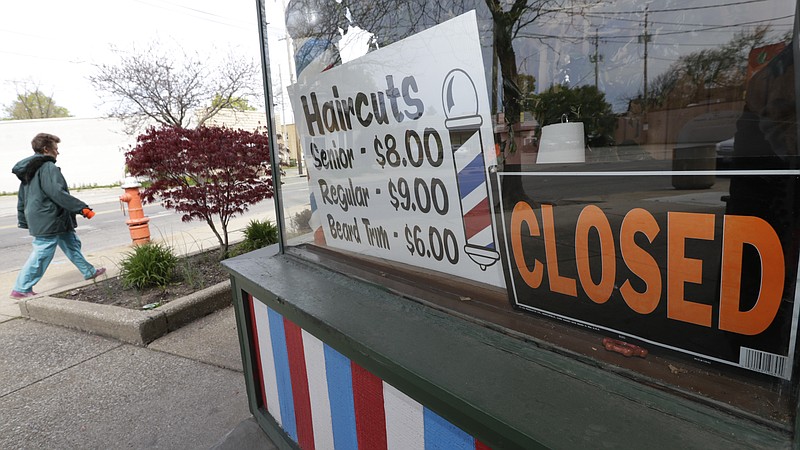NEW YORK (AP) — Small businesses are in limbo again as the coronavirus outbreak rages and the government’s $659 billion relief program draws to a close.
Companies still struggling with sharply reduced revenue are wondering if Congress will give them a second chance at the Paycheck Protection Program, which ended Saturday after giving out 5.1 million loans worth $523 billion. While the program that began April 3 has received mixed reviews, business owners still need help as the virus continues to spread and hamstring the economy.
“They’ve exhausted their funds and are looking for a Round Two,” said Molly Day, a spokeswoman for the National Small Business Association, an advocacy group.
Congress is debating further help for small business as part of a broader coronavirus relief package. One proposal would allow the hardest-hit businesses, those whose revenue is down more than 50 percent, to return for a second PPP loan; there’s still more than $100 billion in unclaimed money in the program.
Some businesses are already expressing concerns. For example, the 50 percent requirement will leave out many small businesses, said Sean Kennedy, an executive vice president at the industry group National Restaurant Association. Many hard-hit groups such as restaurants have managed to keep some revenue flowing in but still need a financial lifeline.
“At that level, only about 45 percent of restaurants would qualify. A second round of PPP will make or break these restaurants,” he said.
Negotiations on the relief package have bogged down over unrelated issues including unemployment benefits for laid-off workers.
When the PPP was created, the widespread expectation was the pandemic would subside by the summer, businesses would reopen and life would return to some semblance of normality. That’s why Congress mandated businesses use the money within eight weeks or forfeit the chance for loan forgiveness.
Instead, late spring and summer brought a resurgence of the virus in many parts of the country as companies reopened. Many restaurants are closed again or operating with severe restrictions on the number of diners they can serve. Sales are down at many retailers as customers would rather shop online than take a chance on an in-person visit. And companies that cater weddings or produce corporate events have little or no revenue as gatherings have been canceled, some of them for the rest of this year.
Many businesses spent the PPP money to meet the terms for loan forgiveness, although they would have been better served saving it. (Congress later gave businesses 24 weeks to spend the money, but it was too late for many.) Five months after the pandemic hit the U.S., they need another loan.
Business is only 25 percent of normal at Coach’s Corner, a restaurant in Elk Grove Village, Illinois, that used to be crowded after Little League and high school football games. A PPP loan helped co-owner Sue Remien hire back her 18 full- and part-time staffers, but when the money ran out, she had to lay six off again. Business is limited by social distancing and unpredictable because many customers are still uneasy about dining out.
“One day is gangbusters — everyone wants to come on a Friday night, then Saturday is nothing. I wonder if I can keep the doors open,” she said.
Remien is interested in a second PPP loan but wants to be able to use the money for expenses besides payroll, rent and insurance — the only costs allowed to be paid for under the original program. She has bills to pay while revenue is down.
While restaurants are among the hardest hit because of their extended shutdowns, other companies were able to get more benefits from the loans.
“There were challenges at the outset but once it go up and running, it really did what it needed to do,” said Chris Netram, a vice president at the National Association of Manufacturers, an industry group whose members include thousands of small businesses. But, he noted, many manufacturers need more help.

